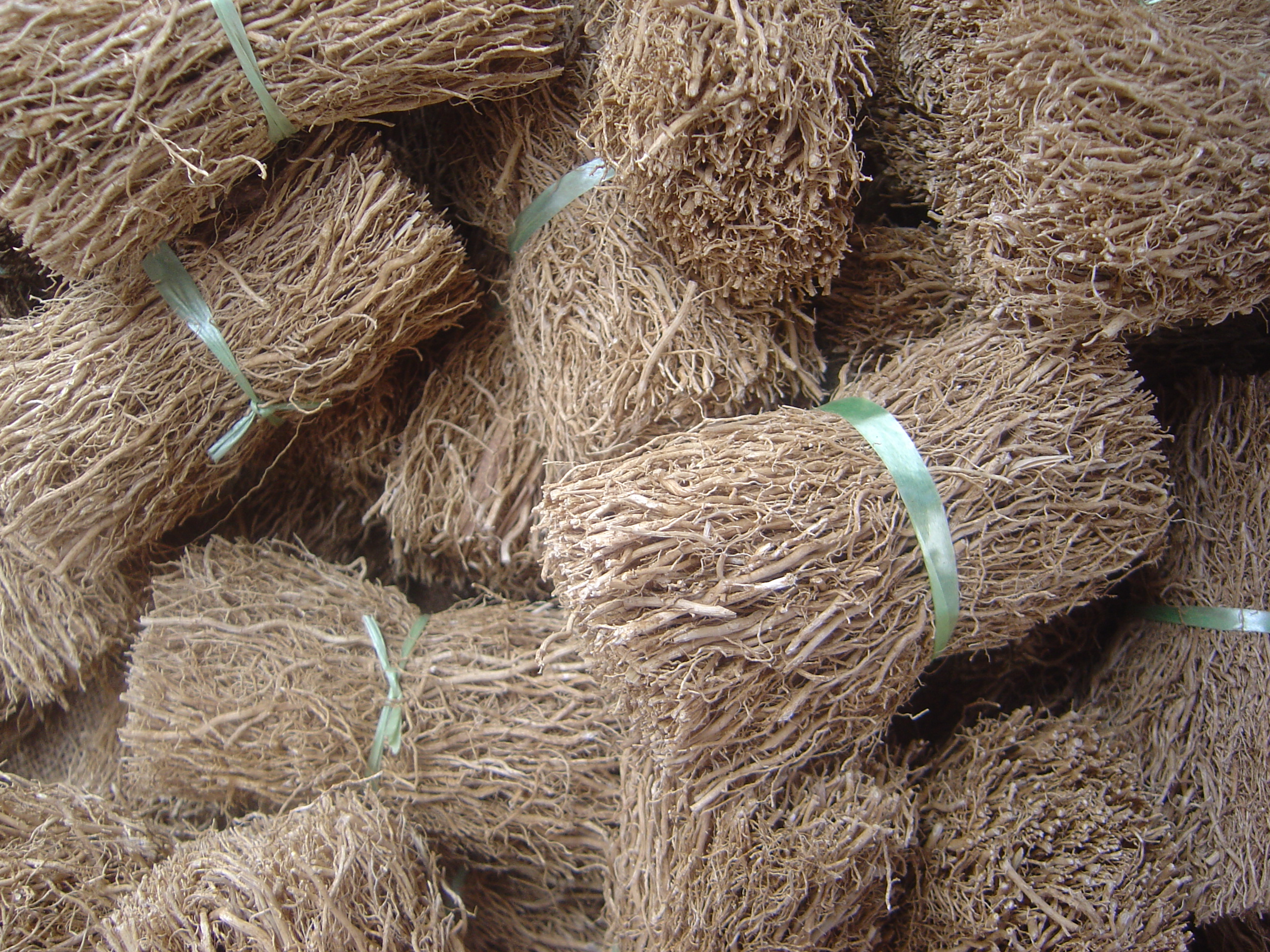|
Vetivazulene
Vetivazulene is an azulene derivate obtained from vetiver oil. It is a bicyclic sesquiterpene and an isomer of guaiazulene Guaiazulene, also azulon or 1,4-dimethyl-7-isopropylazulene, is a dark blue crystalline hydrocarbon. A derivative of azulene, guaiazulene is a bicyclic sesquiterpene that is a constituent of some essential oils, mainly oil of guaiac and chamomile .... References Azulenes Sesquiterpenes {{hydrocarbon-stub ... [...More Info...] [...Related Items...] OR: [Wikipedia] [Google] [Baidu] |
Azulene
Azulene is an organic compound and an isomer of naphthalene. Naphthalene is colourless, whereas azulene is dark blue. Two terpenoids, vetivazulene (4,8-dimethyl-2-isopropylazulene) and guaiazulene (1,4-dimethyl-7-isopropylazulene), that feature the azulene skeleton are found in nature as constituents of pigments in mushrooms, guaiac wood oil, and some marine invertebrates. Azulene has a long history, dating back to the 15th century as the azure-blue chromophore obtained by steam distillation of German chamomile. The chromophore was discovered in yarrow and wormwood and named in 1863 by Septimus Piesse. Its structure was first reported by Lavoslav Ružička, followed by its organic synthesis in 1937 by Placidus Plattner. Structure and bonding left, The blue color of the mushroom '' Lactarius indigo'' is due to the azulene derivative (7-isopropenyl-4-methylazulen-1-yl)methyl stearate. Azulene is usually viewed as resulting from fusion of cyclopentadiene and cycloheptatrie ... [...More Info...] [...Related Items...] OR: [Wikipedia] [Google] [Baidu] |
Vetiver
''Chrysopogon zizanioides'', commonly known as vetiver and khus, is a perennial bunchgrass of the family Poaceae. Vetiver is most closely related to ''Sorghum'' but shares many morphological characteristics with other fragrant grasses, such as lemongrass (''Cymbopogon citratus''), citronella (''Cymbopogon nardus'', ''C. winterianus''), and palmarosa (''Cymbopogon martinii''). Etymology Vetiver is derived from the Tamil வெட்டிவேர் (''veṭṭivēr'') meaning "root that is dug up," via French ''vétyver''. In Northern India it is also called ''khus'' (grass, not to be confused with ''khus khus'', which refers to poppy seed). History During the reign of Harshavardhan, Kannauj became the biggest centre for aromatic trade and for the first time, a vetiver tax was introduced. Description Vetiver grows to high and forms clumps as wide. Under favorable conditions, the erect culms can reach three metres in height. The stems are tall and the leaves are long, ... [...More Info...] [...Related Items...] OR: [Wikipedia] [Google] [Baidu] |
Azulenes
Azulene is an organic compound and an Valence isomer, isomer of naphthalene. Naphthalene is colourless, whereas azulene is dark blue. Two terpenoids, vetivazulene (4,8-dimethyl-2-isopropylazulene) and guaiazulene (1,4-dimethyl-7-isopropylazulene), that feature the azulene skeleton are found in nature as constituents of pigments in mushrooms, Oil of guaiac, guaiac wood oil, and some marine invertebrates. Azulene has a long history, dating back to the 15th century as the azure-blue chromophore obtained by steam distillation of Matricaria recutita, German chamomile. The chromophore was discovered in yarrow and Artemisia (genus), wormwood and named in 1863 by Septimus Piesse. Its structure was first reported by Lavoslav Ružička, followed by its organic synthesis in 1937 by Placidus Plattner. Structure and bonding image:Lactarius indigo 48568 edit.jpg, left, The blue color of the mushroom ''Lactarius indigo'' is due to the azulene derivative (7-isopropenyl-4-methylazulen-1-yl)meth ... [...More Info...] [...Related Items...] OR: [Wikipedia] [Google] [Baidu] |
Terpene
Terpenes () are a class of natural products consisting of compounds with the formula (C5H8)n for n > 1. Comprising more than 30,000 compounds, these unsaturated hydrocarbons are produced predominantly by plants, particularly conifers. Terpenes are further classified by the number of carbons: monoterpenes (C10), sesquiterpenes (C15), diterpenes (C20), as examples. The terpene alpha-pinene, is a major component of the common solvent, turpentine. History and terminology The term ''terpene'' was coined in 1866 by the German chemist August Kekulé to denote all hydrocarbons having the empirical formula C10H16, of which camphene was one. Previously, many hydrocarbons having the empirical formula C10H16 had been called "camphene", but many other hydrocarbons of the same composition had had different names. Kekulé coined the term "terpene" in order to reduce the confusion. The name "terpene" is a shortened form of "terpentine", an obsolete spelling of "turpentine". Although sometimes ... [...More Info...] [...Related Items...] OR: [Wikipedia] [Google] [Baidu] |
Isomer
In chemistry, isomers are molecules or polyatomic ions with identical molecular formulae – that is, same number of atoms of each element – but distinct arrangements of atoms in space. Isomerism is existence or possibility of isomers. Isomers do not necessarily share similar chemical or physical properties. Two main forms of isomerism are structural or constitutional isomerism, in which ''bonds'' between the atoms differ; and stereoisomerism or spatial isomerism, in which the bonds are the same but the ''relative positions'' of the atoms differ. Isomeric relationships form a hierarchy. Two chemicals might be the same constitutional isomer, but upon deeper analysis be stereoisomers of each other. Two molecules that are the same stereoisomer as each other might be in different conformational forms or be different isotopologues. The depth of analysis depends on the field of study or the chemical and physical properties of interest. The English word "isomer" () is a back-for ... [...More Info...] [...Related Items...] OR: [Wikipedia] [Google] [Baidu] |
Guaiazulene
Guaiazulene, also azulon or 1,4-dimethyl-7-isopropylazulene, is a dark blue crystalline hydrocarbon. A derivative of azulene, guaiazulene is a bicyclic sesquiterpene that is a constituent of some essential oils, mainly oil of guaiac and chamomile oil, which also serve as its commercial sources. Various soft corals also contain guaiazulene as a principal pigment. Its low melting point makes guaiazulene difficult to handle, in contrast to the crystalline nature of the parent azulene. The electronic structure (and colors) of guaiazulene and azulene are very similar. A similar structure Alismol is in a different oxidation state. Applications Guaiazulene is an U.S. FDA-approved cosmetic color additive. It – or its 3-sulfonate – is a component of some skin care products together with other skin soothing compounds such as allantoin Allantoin is a chemical compound with formula C4H6N4O3. It is also called 5-ureidohydantoin or glyoxyldiureide. It is a diureide of glyoxylic acid. ... [...More Info...] [...Related Items...] OR: [Wikipedia] [Google] [Baidu] |




